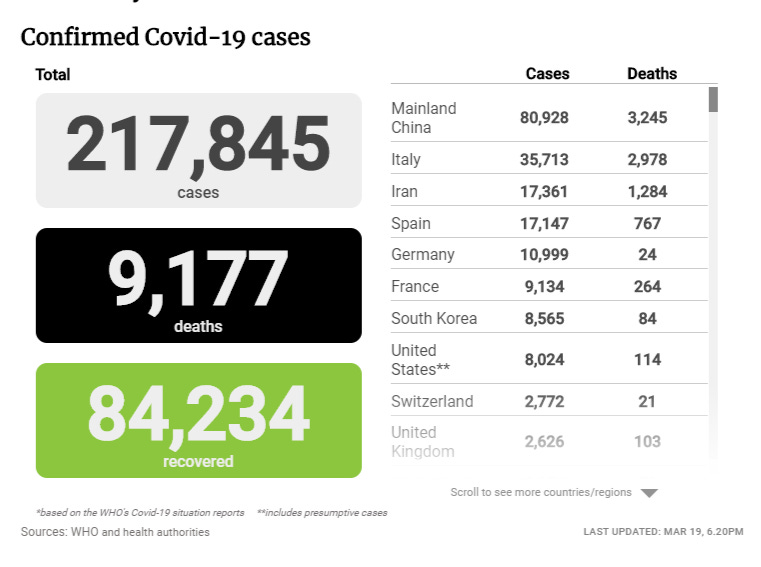Economy And Diseases
South China Morning Post is an excellent resource for international news coverage of the ongoing COVID-19 pandemic. They publish up-to-date statistics of confirmed cases around the world. I have been following it for some time.
One pattern jumps out to me. The most affected countries in the top of the chart, with the exception of Iran, are all developed, G-7 kind of countries. The initial origin is China. The next affected is South Korea. Now all Western European countries are following. The US and UK are lacked by two weeks or so but they are steadily catching up. Keep scrolling down the chart, you will find the rest of the entire world with a relatively low number of cases. Big countries like Indonesia and Pakistan rank quite a bit behind. Bangladesh has 17 cases and Nigeria has 2. What does this pattern tell us? Is it counter-intuitive that rich countries are ravaged but poor countries are spared?
Skeptics may believe less developed countries simply don’t test enough subjects and produce inaccurate numbers. This might be a factor. It might only be a matter of time before diseases hit poor countries in a big way. My hope is this grim prediction will not turn out to be true.
What I believe is infectious diseases is the Achilles’ heel of economic development. The movement of people within and to and from developed countries is an important driver of the economy. It connects them into a big market and allows them to leverage a large pool of human resources. But this is also a vector of spread of diseases. The better the connectivity, the faster it spreads. Urbanization improves productivity and innovation. Yet living close together is also risky from an epidemic’s perspective.
Less developed countries seem less affected for now. There is less movement of people to and from economic hubs or within. The populations are more rural. This slows down the spread of diseases relative to big cities.
Developed countries also have the most to lose in economic breakdown. Since they produce more, the same percentage of reduction in productivity would have more effect than in other countries. How to develop a vibrant economy but at the same time minimize the risk of epidemic? Human interactions are crucial for the modern economy. Yet this also makes us vulnerable to outbreak. COVID-19 will not be the last epidemic. Looking back in the past decades we have seen many large ones. The future of our economy depends on strategies to mitigate epidemics that are to come.


